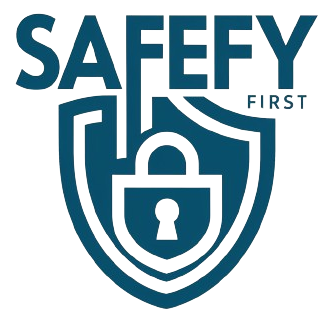
Whether you’re a new worker just starting out or a seasoned safety officer, it’s important to always keep safety top of mind. Following some basic golden rules can help protect not only yourself but also your coworkers from potential hazards on the job.
In this article, I’ll outline the top safety rules that everyone should commit to memory and practice daily.
We’ve all heard that safety should come first, but what exactly does that mean in practical terms? For me, making safety the number one priority is really about developing an instinctive awareness of your surroundings.
It’s being hyper-vigilant of anything that could pose even a minor risk and addressing issues proactively before an incident occurs.
Constant vigilance is key, but it’s also important not to become paranoid! The goal isn’t to live in fear but rather to cultivate safety as a core value and a natural part of your daily work mindset.
Think of it like looking both ways before you cross the street – after a while, it just becomes second nature. Developing safe habits is similar. With practice and repetition, staying alert to potential dangers gradually becomes your automatic default setting on the job.
So what are some specific golden rules that can help ingrain safe habits? Here are a few that I consider especially important:
Assess Risks Before Starting Any Task
Taking a few minutes to scan your work area for potential risks is so worthwhile. Look for tripping hazards, sharp edges, heavy loads, chemical exposures – anything that could lead to an accident if not addressed properly. Developing a pre-task plan is also important.
For example, if lifting a heavy object, make sure your path is clear and you have someone to assist you. Taking a few minutes to anticipate risks is time well spent if it prevents an injury.
Use the Right Tools and Protective Equipment
Just as important as assessing risks is having the proper tools and PPE (personal protective equipment) for each task. Whether that’s steel-toed boots, gloves, safety glasses, fall protection – make sure you have the right gear and use it correctly every time.
Never take shortcuts or get complacent when it comes to PPE. Our tools and equipment are designed to keep us safe, so respect them accordingly.
Pay Attention to Your Surroundings
We all have moments of distraction, but it’s crucial to stay present and focused when performing work duties, especially in busy or hazardous areas. Pay attention to coworker movements and be aware of machinery, vehicles or other equipment in operation around you.
Minimize distractions by silencing phones during high-risk tasks. Alertness is so important for preventing incidents caused by lapses in attention or situational awareness.
Speak Up if You See an Unsafe Act
If you notice a coworker taking shortcuts or engaging in risky behaviour, don’t just turn a blind eye – say something right away. A friendly reminder is usually all it takes to correct minor unsafe acts before an incident occurs.
And if you see a major safety violation or dangerous situation, don’t hesitate to stop all work immediately until it’s addressed. We all have a responsibility to look out for one another on the job.
Follow Proper Lockout/Tagout Procedures
Especially important for working with machinery or energy sources, lockout/tagout refers to specific procedures for disabling or isolating equipment before performing service or maintenance.
This ensures the equipment can’t be restarted unexpectedly while workers are exposed to potential energy hazards.
Always get proper training on lockout/tagout procedures for your workplace and double check that all energy sources are properly blocked off before beginning any repairs or services. It only takes one slip to cause a serious accident.
Don’t Try to “Catch” a Falling Object
When working at heights or around unstable loads, resist the urge to try to catch or stop a falling object yourself – it’s simply not worth the risk. Instead, clear the area below the work and have spotters in place to warn others if something does start to fall.
Your life and safety are more valuable than any equipment or materials. If an object does start to drop, get out of the way and let it fall – don’t become a human safety net!
Report All Incidents and Near Misses
If an injury, spill or other incident does occur, stop work immediately and notify your supervisor. Thorough reporting allows issues to be properly investigated and corrective actions to be put in place to prevent reoccurrence.
But don’t just report actual incidents – also communicate any close calls or near misses, as these can provide valuable safety lessons as well.
An open incident reporting culture where workers feel comfortable speaking up is so important for continuous safety improvements.
Clean As You Go
A tidy, clutter-free workspace is less hazardous and makes it easier to spot potential risks. Developing good housekeeping habits by cleaning up after a task or at the end of each day prevents tripping hazards and equipment damage down the line.
It also makes inspections and maintenance more effective. A little straightening as you go is a small price to pay for increased safety.
Follow Procedures and Don’t Take Shortcuts
Safety policies and work procedures are put in place to protect you – not to make your life difficult! Resist any urges to speed things up by skipping steps or ignoring proper protocols.
Cutting corners might save a few minutes in the short term but could have disastrous consequences. Instead, lead by example for your coworkers by strictly adhering to safety rules and best practices at all times,
no matter how mundane they may seem. Your safety is worth more than any gains from risky shortcuts.
Ask Questions When Unsure
Don’t pretend to understand if you’re unsure about any safety aspects of a task. Asking questions is not a sign of weakness – it shows you care about doing things correctly.
Your supervisors and coworkers are resources, so make use of their expertise to clarify proper procedures before starting potentially hazardous jobs.
It’s better to ask and avoid mistakes than stay silent out of pride or fear of looking foolish. We all start somewhere, so don’t be afraid to keep learning when it comes to safety.
In summary, following these golden safety rules with diligence and consistency can go a long way in protecting you and your coworkers from harm. Make safety evaluations, hazard assessments, and best practices second nature through regular practice and repetition.
And always look out for each other – we’re all on the same team when it comes to making it home safely at the end of each day. Staying alert, using PPE properly, speaking up about issues, and avoiding shortcuts are habits that can serve you well for a lifetime of safe work.
